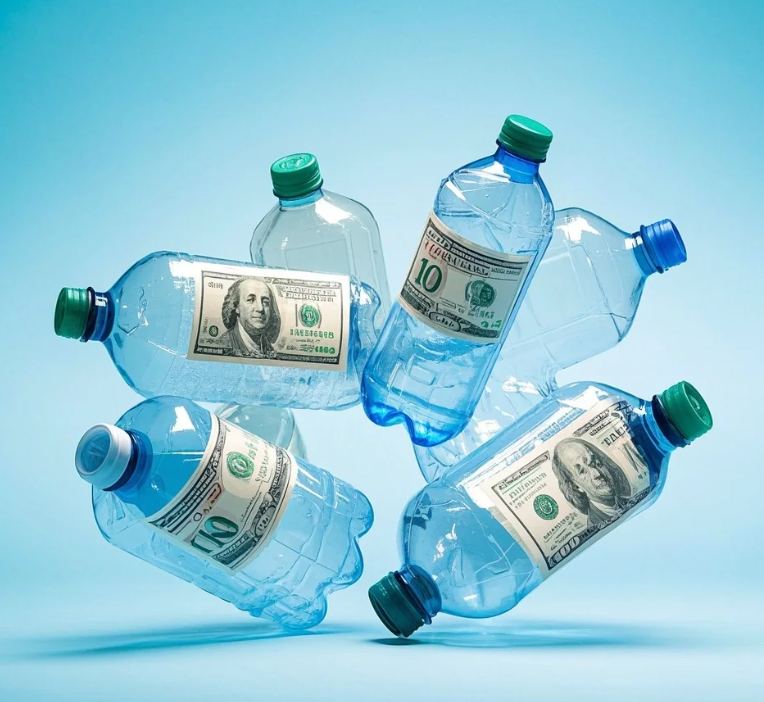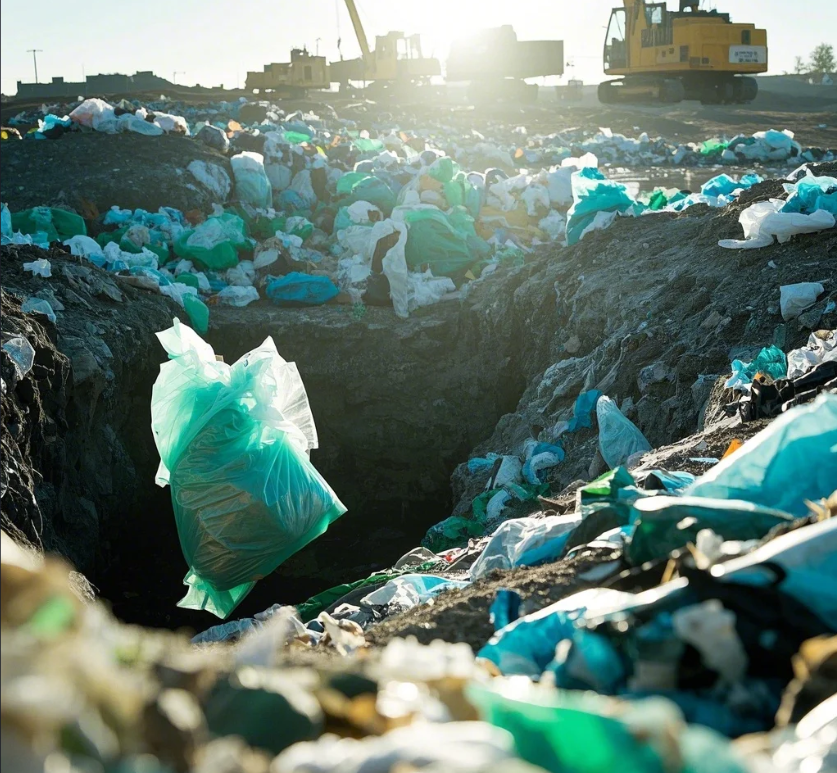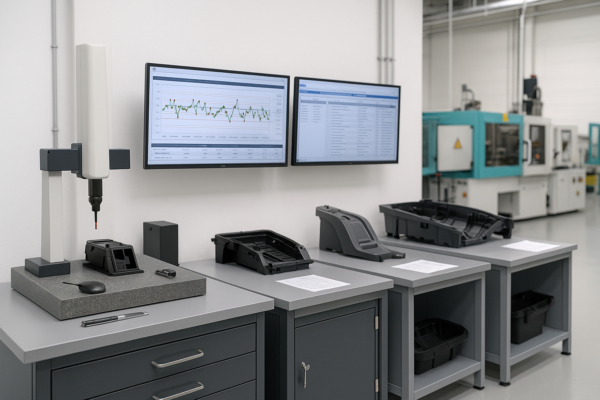What happens to plastic you throw away?

Plastic has become an integral part of modern life, providing convenience and durability in countless products. However, once we throw plastic away, its journey doesn’t simply end. In fact, the fate of discarded plastic is far more complex than we often realize, and understanding what happens to plastic when it’s discarded can help us make more responsible decisions. From the production of plastic waste to its eventual fate in landfills or recycling plants, plastic waste causes lasting environmental challenges.
Snippet paragraph: Once plastic is thrown away, it can persist in the environment for centuries, often breaking down into harmful microplastics. Understanding its journey is key to reducing waste and its environmental impact.
Transition paragraph: In this article, we will explore what happens to plastic when it’s thrown away, including how long it lasts, what happens in landfills, and the environmental impact it has. Let’s dive deeper into the journey of discarded plastic and its long-term consequences.
How many plastic bottles do you need to make $100?

While the environmental impact of discarded plastic bottles is a serious concern, some people have found ways to profit from recycling them. In many parts of the world, there are programs that pay individuals for collecting and recycling plastic bottles. The payout varies by location, but let’s look at how many bottles it would take to make $100.
Snippet paragraph: To make $100 from recycling plastic bottles, you would need to collect and return hundreds of bottles, depending on the payout per bottle in your area.
Bottle Deposit Programs
In countries or regions with bottle deposit programs, consumers pay a small deposit when purchasing beverages in plastic or glass bottles. Once the bottle is empty, it can be returned for a refund of the deposit. The amount returned varies, but typically, the refund ranges from 5 to 15 cents per bottle.
To make $100, you would need to return anywhere from 667 to 2,000 bottles, depending on the refund amount. For example:
- If the deposit is 5 cents per bottle, you would need to return 2,000 bottles to make $100.
- If the deposit is 10 cents per bottle, you would need to return 1,000 bottles to make $100.
- If the deposit is 15 cents per bottle, you would need to return 667 bottles to make $100.
While this may seem like a lot, in areas where there is a high concentration of plastic bottle waste, many people participate in bottle collection as a way to earn some extra cash. However, the bigger question remains—what happens to all those bottles after they are returned or thrown away?
What happens when plastic is discarded?

When plastic is discarded, it doesn’t simply disappear. Unlike organic materials that biodegrade naturally over time, plastics are synthetic polymers that persist in the environment for hundreds to thousands of years. The process of discarding plastic varies depending on the method of disposal, but regardless of whether it’s placed in a recycling bin, landfilled, or discarded as litter, plastic waste causes long-term environmental harm.
Snippet paragraph: Discarded plastic doesn’t biodegrade easily and can remain in the environment for centuries, contributing to pollution and environmental degradation.
The Process of Disposal
When you throw plastic away, the item typically ends up in one of three places: recycling centers, landfills, or it becomes litter in the environment. The journey that plastic takes depends largely on the type of plastic and local waste management practices.
-
Recycling: In ideal circumstances, plastic waste is collected and sent to a recycling facility, where it can be processed and turned into new products. However, only a small percentage of plastic waste is actually recycled, as many plastics are not suitable for recycling due to their composition or contamination with food or other materials. Even when plastics are recycled, the process is often energy-intensive, and the resulting products may not be as durable as the original plastic.
-
Landfills: The majority of plastic waste ends up in landfills, where it accumulates over time. While plastic does not biodegrade in landfills, it will slowly break down over hundreds or thousands of years, creating environmental problems in the process. Some plastics can leach harmful chemicals into the soil and water, further polluting ecosystems.
-
Littering: Plastics that are discarded as litter often end up in oceans, rivers, and forests, where they can pose significant harm to wildlife and ecosystems. Animals mistake plastic items for food, and larger plastic items can entangle marine life or terrestrial animals. Once in the ocean, plastics can break down into smaller pieces, becoming microplastics that are ingested by marine organisms, entering the food chain.
The Long-Term Environmental Impact
The environmental impact of discarded plastic is immense. It can contribute to pollution, destroy habitats, and harm animals. Plastic takes hundreds of years to break down, and even then, it doesn’t truly biodegrade. Instead, it breaks down into smaller and smaller pieces called microplastics, which can spread throughout ecosystems, causing long-term harm to both land and marine life.
What happens to plastic that is thrown in landfills?

Plastic in landfills represents a significant portion of the world’s waste problem. Once plastic is disposed of in a landfill, it can remain there for hundreds, if not thousands, of years. Unlike organic materials, which decompose over time, plastic does not break down easily, creating long-lasting pollution in landfills. But what exactly happens to plastic when it’s buried in a landfill?
Snippet paragraph: Plastic in landfills takes hundreds of years to decompose, leaching harmful chemicals into the surrounding soil and water while contributing to long-term waste accumulation.
The Slow Breakdown of Plastic in Landfills
While plastic doesn’t break down in the same way that organic matter does, it still undergoes some form of degradation in landfills. Over time, plastics exposed to heat, moisture, and microbial activity may begin to break down into smaller fragments. However, this process is incredibly slow, and plastic will often remain in landfills for centuries without completely decomposing.
Some plastics, like polyethylene, are particularly resistant to degradation, which is why they can stay in landfills for such long periods. Others, like bioplastics, may break down more quickly, but they still release harmful substances into the environment.
Leachate and Chemical Contamination
One of the major environmental risks associated with plastic waste in landfills is the potential for leachate. Leachate is a liquid formed when rainwater or other liquids pass through the waste in a landfill, picking up contaminants along the way. Plastics can leach harmful chemicals, such as phthalates and bisphenol A (BPA), into the surrounding soil and groundwater, contaminating ecosystems and posing health risks to nearby communities.
Even though landfills are designed to contain waste and minimize contamination, the sheer volume of plastic waste in them makes it difficult to control the environmental impact. With so much plastic accumulating in landfills, the potential for leachate contamination continues to grow.
Long-Term Waste Accumulation
The accumulation of plastic in landfills is a growing concern. According to estimates, plastics make up a significant portion of the waste in modern landfills. The inability of plastic to break down means that landfill space is used up faster than it would be with biodegradable materials. As a result, landfills are filling up more quickly, leading to the need for more waste disposal sites.
What happens to plastic when it gets old?

Over time, plastic items can undergo physical and chemical changes. This process is influenced by factors such as exposure to sunlight, air, moisture, and temperature. As plastic gets older, it becomes more brittle, prone to cracking, and susceptible to breaking into smaller fragments.
Snippet paragraph: As plastic ages, it becomes more brittle and prone to breaking, breaking down into smaller pieces called microplastics that persist in the environment for long periods.
The Aging Process of Plastic
As plastic ages, it begins to lose its structural integrity. One of the primary causes of plastic aging is oxidation, which occurs when the plastic reacts with oxygen in the air. This process weakens the plastic’s chemical bonds, making it more brittle and less flexible. Exposure to ultraviolet (UV) light from the sun accelerates this process, causing the plastic to break down more quickly.
Older plastic may begin to crack and crumble into smaller pieces. These fragments often contribute to the growing problem of microplastics in the environment. Once plastic breaks down into these tiny particles, it becomes even harder to remove from the environment, and it poses a greater risk to wildlife, as animals are more likely to ingest the microplastics.
The Environmental Impact of Aging Plastics
As plastic ages and breaks down into smaller pieces, it becomes more difficult to manage. Microplastics are easily ingested by marine life, which mistake them for food. This can cause a variety of health problems for animals and enter the food chain, affecting ecosystems and humans alike. Additionally, microplastics are virtually impossible to clean up, making them a persistent problem.
Even as plastic ages and degrades, it can still release harmful chemicals into the environment. For instance, older plastic may release additives like plasticizers or flame retardants, which can contaminate water and soil, further contributing to environmental pollution.
Conclusion
The journey of plastic after it’s discarded is long and troubling. Whether it ends up in landfills, recycling centers, or the environment, plastic waste has long-lasting consequences. It doesn’t biodegrade, and instead, it breaks down into microplastics that persist in ecosystems for centuries. Understanding what happens to plastic when it’s thrown away emphasizes the importance of reducing plastic use, recycling effectively, and finding alternative materials. As consumers, we can play a key role in mitigating the environmental damage caused by plastic waste.







